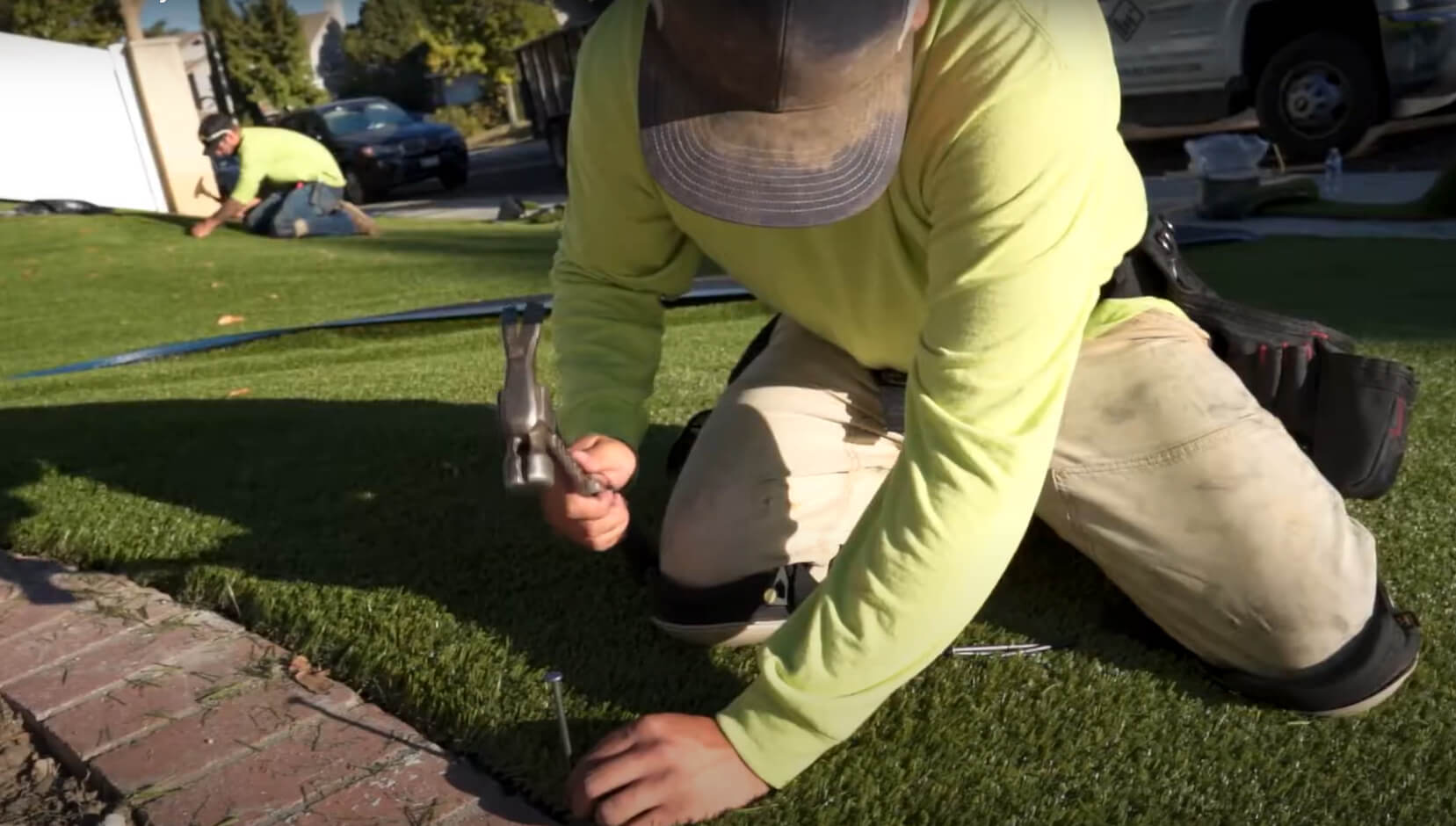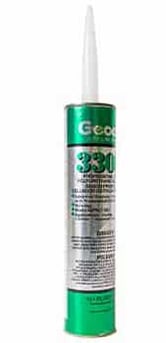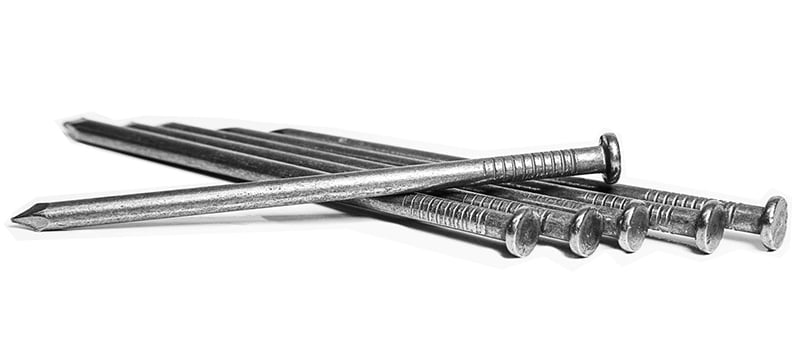Glue, Nails, or Tape: How to Join Artificial Turf
Aug 03, 2023 | artificial grass installation

High-quality installation is crucial to your artificial grass's longevity, natural appearance, and integrity. The success of the installation process depends on the materials you choose to secure the turf.
The decision to apply glue, tape, or nails depends on many factors, including the turf's purpose and your budget.
Ideally, you should use a combination of turf glue, seam tape, and nails to ensure the invisibility of artificial grass seams and maximize integrity and lifespan.
Let's look closer at choosing suitable materials to secure your artificial turf and create perfect seams.
Seaming with Seam Tape and Turf Glue
Combining seam tape and glue is the most popular and reliable way to join synthetic turf pieces.
Pros:
-
High integrity
-
Longest lifespan
Cons:
-
Higher cost
When you use seam tape and turf glue, you contribute to the natural appearance of your lawn or backyard putting green.

The process of using this combination may seem easy at first. However, it requires top-notch precision. Otherwise, you may need to deal with visible seams and patches of shifting turf.
To secure your artificial grass with seam tape and glue, you would have to:
-
Purchase seam tape that is sealed on one side and high-quality turf glue
-
Place the seam tape on the surface with the sealed side down
-
Apply turf glue to the non-sealed side
-
Place artificial grass on top of the glue
-
Apply pressure
-
Allow the glue to cure before using the turf
Seaming tape and glue are excellent for installing artificial grass on putting greens since the combination eliminates the danger of the protruding nails or staples interfering with the ball's trajectory. It is also suitable for lawns and playgrounds.
The seaming tape and glue method works best when installing artificial grass on concrete. You can also use this method when installing artificial turf on soil (with a suitable base layer).
However, you should still use nails or staples at the turf’s periphery to maximize security and integrity.
When installing your artificial turf on soil, use 40-D 5-inch galvanized turf nails to secure the perimeter. You must hammer these nails every six inches to ensure the turf stays in place and endures the intended wear.
Staples are less obvious but not as robust as nails. They can reinforce the seams and keep your turf in place.
Seaming with Staples and Nails
Seaming with staples and nails is another viable option to help you achieve the desired results.
Pros:
-
Cost-effectiveness
-
Speed
-
Simplicity
Cons:
-
Shorter lifespan
-
Less robust
-
Seam visibility (if not done with due precision)
Securing your artificial turf with nails involves using nails every 2 to 3 inches in the center and every 6 inches on the perimeter. To do it, you would have to take these steps:
-
Cut and position the turf to ensure a perfect fit
-
At the seams, fasten together two pieces of the turf with nails spaced 1 to 2 inches apart
-
Then use 40-D nails to secure the perimeter the same way you would do it when using seam tape and glue

If you take advantage of nails, you must inspect the turf regularly. Over time, nails can become loose and start protruding too far from the faux grass.
Consider checking the seams once every two months to ensure the nails are in place.
With the right maintenance and regular inspections, nails can be a cost-effective way to secure the turf. You should use special finishing nails for putting greens.
Seaming with Double-Sided Industrial Tape
The third seaming method isn't as popular as the other two. However, it can be an excellent solution for installing artificial grass in hot climates. By itself, the double-sided industrial tape is a less durable option than nails and seam tape with glue. However, when the weather is consistently hot, it creates a robust bond with the artificial grass.
Pros:
-
Fast
-
Cost-effective
Cons:
-
Not as durable as other methods
-
A temporary measure
The installation process involving double-sided artificial tape is similar to the seam tape and glue installation method. You need to exercise precision when fitting the two pieces of synthetic grass to maintain the gauge (distance between the yarns). Then, stick one side of the tape to the surface, put the two pieces of artificial turf on top of the second side, and apply pressure.
Double-sided industrial tape is excellent for events (festivals, weddings, trade shows), displays, and other temporary installations in areas such as Las Vegas where there is enough heat to melt the industrial tape to the underside of the artificial grass. This method can work well on smooth, hard surfaces, such as concrete or asphalt.
Seam Tape, Turf Glue, and Non-Galvanized Nails
The best combination for high-quality turf installation is seam tape, turf glue, and non-galvanized nails. You use seam tape and turf glue to ensure invisible and durable seams and hammer nails to fortify the perimeter.
While other methods are faster and less expensive, they don’t maximize the artificial turf's durability and longevity. In the long run, using just nails, industrial tape, or staples won’t provide the same advantages as combining the materials with seam tape.


